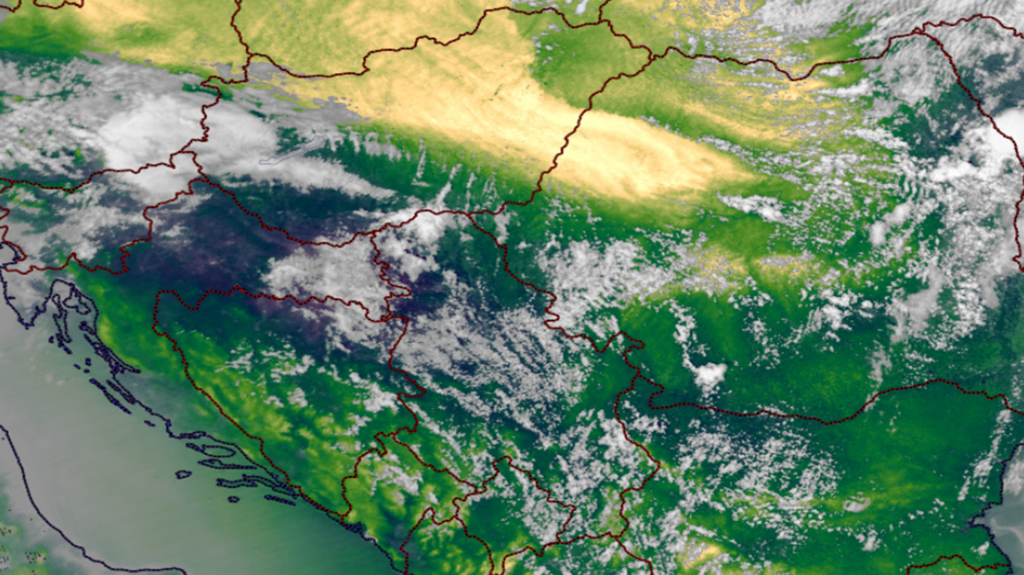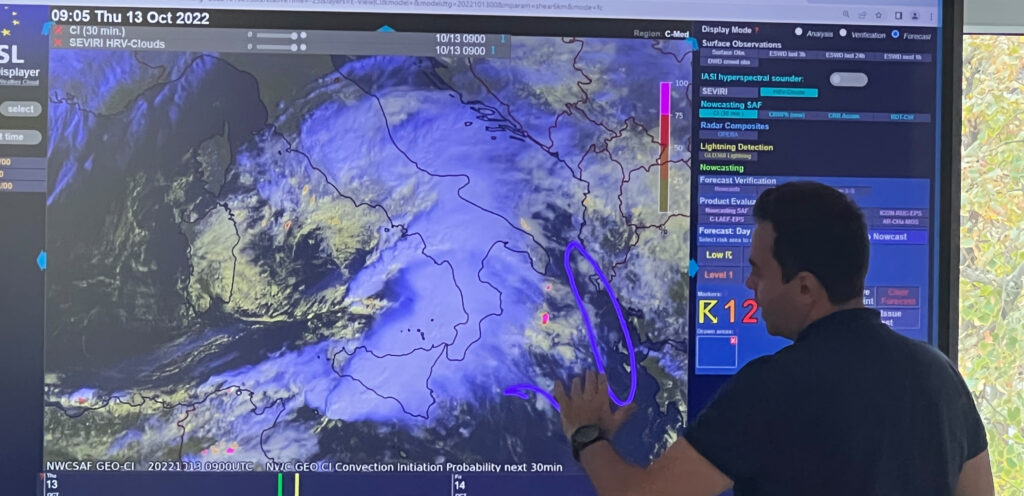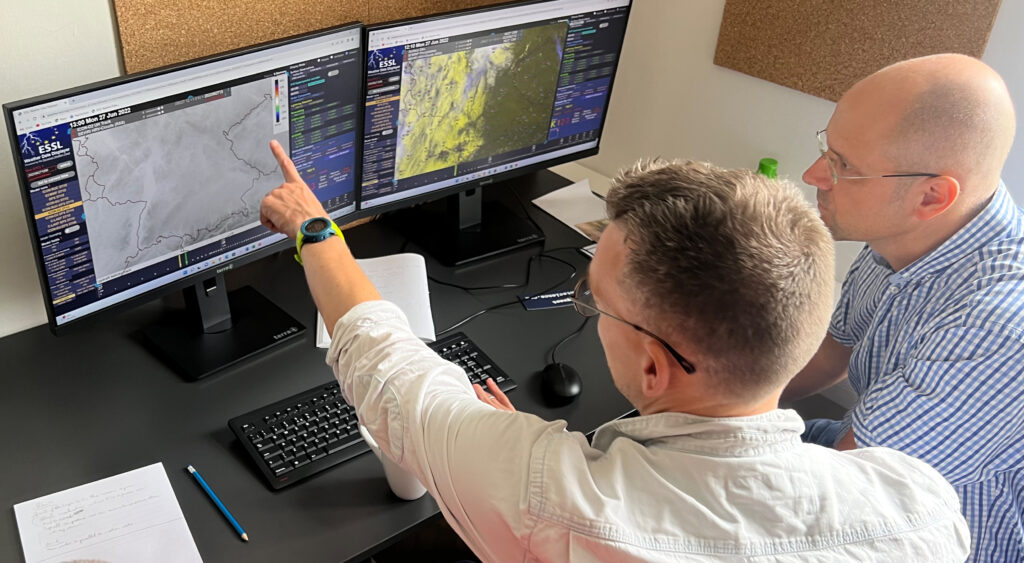The new EUMETSAT MTG-I (Meteosat Third Generation – Imaging) satellite, launched on 13 December, will bring more frequent data with higher spatial resolution and more channels than ever before. With the lightning imager, it will also bring a completely new capability to monitor storms from space.
ESSL collaborates with EUMETSAT as part of its User Preparation programme for the new MTG satellites with its testbeds and ESSL training activities.

Operational data from the new MTG-I1 satellite will become available in the second half of 2023 if everything goes well. The current cooperation between EUMETSAT and ESSL involves training on how to use the new data. At the EUMETSAT-ESSL Testbeds weather forecasters are being prepared so that they are able to quickly make use of the new capabilities of MTG. Besides providing training, ESSL experiments with new products, such as a visualization of atmospheric moisture very close to the ground – an important physical ingredient for convective storms.

Another focus of the multi-year cooperation between EUMETSAT and ESSL is the preparing for the new lightning imager (LI) data aboard MTG.

Link to EUMETSAT page on MTG
